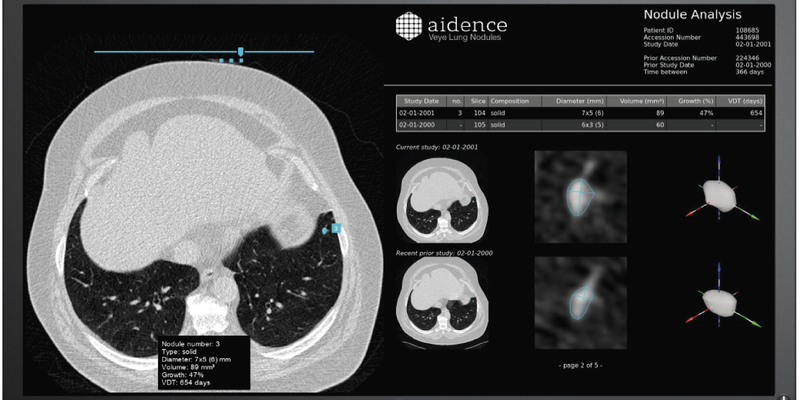
Company: DeepHealth (Aidence), Product: Saige Lung (Veye Lung Nodules)
Performance of AI for preoperative CT assessment of lung metastases: Retrospective analysis of 167 patients
European Journal of Radiology, 2024
Abstract
Objectives
To evaluate the performance of artificial intelligence (AI) in the preoperative detection of lung metastases on CT.
Materials and methods
Patients who underwent lung metastasectomy in our institution between 2016 and 2020 were enrolled, their preoperative CT reports having been performed before an AI solution (Veye Lung Nodules, version 3.9.2, Aidence) became available as a second reader in our department. All CT scans were retrospectively processed by AI. The sensitivities of unassisted radiologists (original CT radiology reports), AI reports alone and both combined were compared. Ground truth was established by a consensus reading of two radiologists, who analyzed whether the nodules mentioned in the pathology report were retrospectively visible on CT. Multivariate analysis was performed to identify nodule characteristics associated with detectability.
Results
A total of 167 patients (men: 62.9 %; median age, 59 years [47-68]) with 475 resected nodules were included. AI detected an average of 4 nodules (0-17) per CT, of which 97 % were true nodules. The combination of radiologist plus AI (92.4 %) had significantly higher sensitivity than unassisted radiologists (80.4 %) (p < 0.001). In 27/57 (47.4 %) patients who had multiple preoperative CT scans, AI detected lung nodules earlier than the radiologist. Vascular contact was associated with non-detection by radiologists (OR:0.32[0.19, 0.54], p < 0.001), whilst the presence of cavitation (OR:0.26[0.13, 0.54], p < 0.001) or pleural contact (OR:0.10[0.04, 0.22], p < 0.001) was associated with non-detection by AI.
Conclusion
AI significantly increases the sensitivity of preoperative detection of lung metastases and enables earlier detection, with a significant potential benefit for patient management.
Read full study